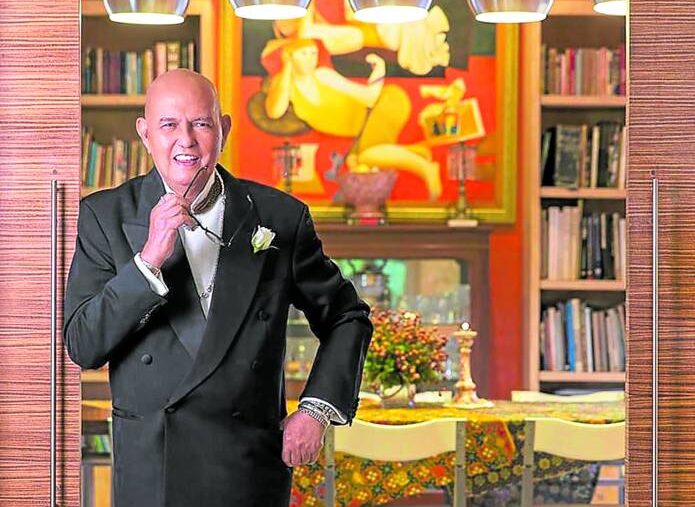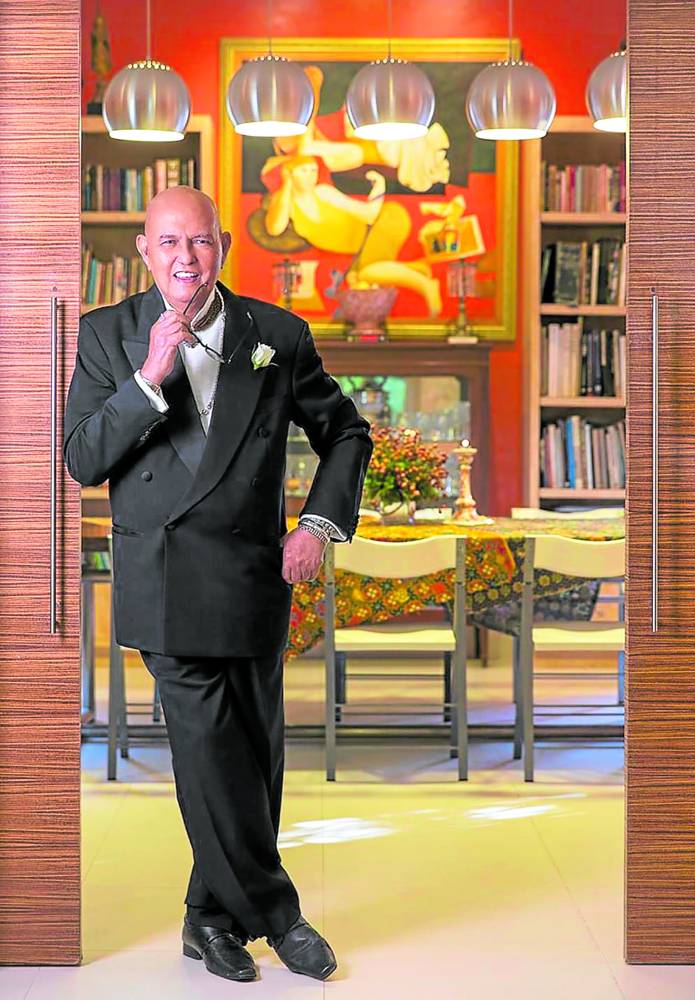
At the 1965 presidential inauguration of Ferdinand Marcos Sr. at Quirino Grandstand, his first lady, Imelda, was clad in a terno embellished with artisanal embroidery. Her hair was pulled back and swept into an updo and her makeup looked natural. This was the signature look that the late couturier Christian Espiritu gave to his clients.
His relationship with Imelda catapulted him to power, although he already had famous clients such as beauty queen Stella Marquez-Araneta and grand dames Elvira Manahan and Chona Kasten. Margarita “Tingting” Cojuango, the “It” girl of the ’60s, was his muse.“We grew up knowing that Dad was important. He liked to call himself ‘The Living Legend,” says Talitha Espiritu, an associate professor at Wheaton College in Massachusetts.
While National Artist Ramon Valera modernized the terno, Espiritu took it a step further. Trained as an architect, he focused on construction, clean lines and easy fit, allowing a busy woman like Imelda to move freely. His nephew, Parrish Espiritu Carlos, likewise a designer, says, “Tito Christian was [arguably] the first Filipino designer who espoused minimalism and disliked overwrought details. He designed for comfort, and not showing the cleavage or hug the body.”
Famous designs
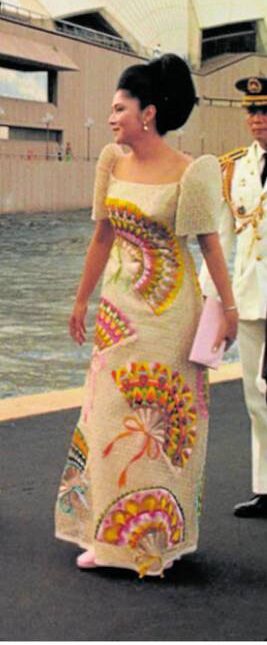
While other designers had been working with artisans for embroidery and beadwork, Espiritu brought to the fore the women from his hometown in Parañaque.Mayer School of Fashion Design alumnus Edgardo Ramon “Gang” Hizon Gomez was the first professional assistant who worked with him from 1971 to 1974.
“Christian was a good boss. If other couturiers had ghost designers, he trusted me and let me face the clients,” recalls Gomez, now known as the Benedictine monk Dom Martin de Jesus Gomez. Espiritu sent Gomez (and later Loretto Popioco, who assisted from 1973 to 1976) to Malacañang to bring a set of 10 ternos for Imelda’s state visits.
One of Gomez’s first jobs was to work on her wardrobe to the Shah of Iran’s fete at the ancient ceremonial complex of Persopolis in 1971. “We researched on the tapestry designs of Persia (now Iran) and used them as embellishments on the ternos,” he recalls.Gomez cites one of the most unforgettable ternos of Imelda: At the “Kasaysayan ng Lahi” parade in 1974, she wore a simple empire terno in jusi with callado embroidery punctuated by a bold alampay (scarf) that trailed from the shoulders to the ankles. It was embroidered with geometric designs in bold colors.
One of Espiritu’s signatures was restraint. He introduced the hand-beaded lining under the piña terno that exuded a subtle sheen. Imelda wore this at the Van Cliburn gala in 1974. Her favorite was the jusi terno with callado embroidery, accentuated with big fans in tropical colors. She wore it at the opening of the Sydney Opera House in 1974.
“Contrary to perception that Imelda never repeated clothes, if she liked a gown, she wore it several times, like this terno,” says Gomez.
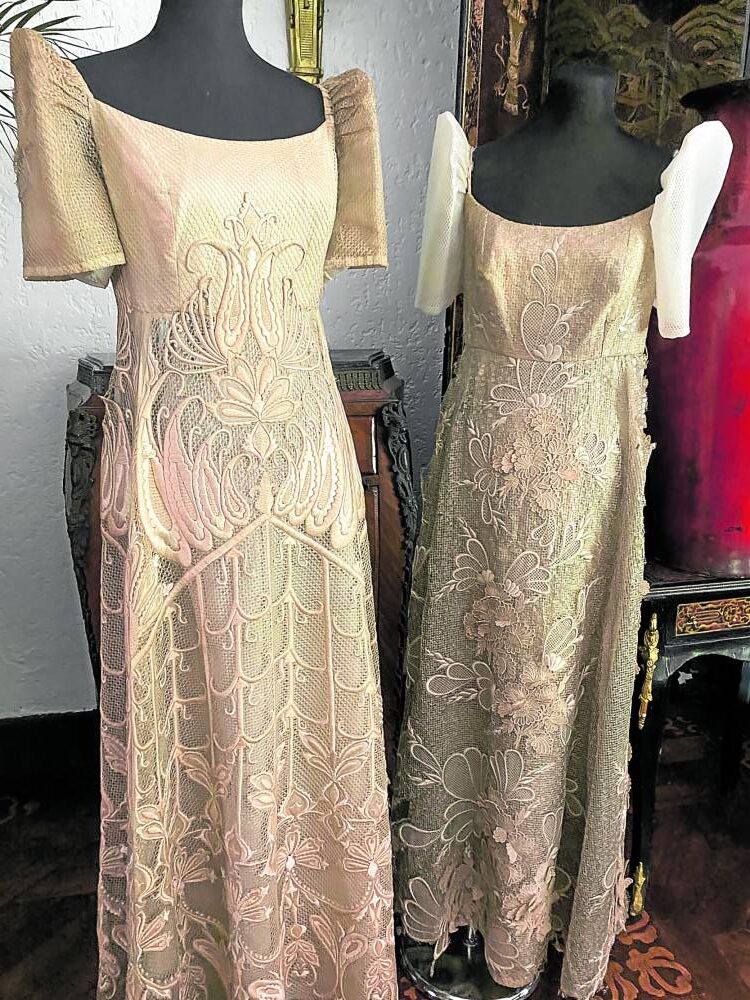
Dumped
Aside from Gomez and Popioco, Espiritu’s professional assistants included Barge Ramos, who handled the men’s department and tailoring. Though Espiritu’s arrangement with Inno Sotto was informal, he commended his ward for his keen eye for color and shape.
However, Espiritu and his staff were overtaxed by the First Lady’s orders. The in-house embroiderers who lived at his atelier worked on her gowns 24/7. Espiritu also farmed out the work to embroiderers in Parañaque. He would get calls at 2 a.m. for a rush job or a fitting. Gomez quickly finished the gowns as Imelda’s security officers waited outside the shop.
Towards the late ‘70s, Espiritu was worn down by the insatiable demands of his VIP client. Gomez observes, “Imelda’s ternos were getting too loud.” Unlike the previous ternos which highlighted her allure, the new designs called attention to themselves.
Imelda then sought Popioco, who had his own shop with embroiderers from Cavite, until she shifted to Joe Salazar.
Espiritu often told this writer about his burnout, coupled with dejection that the First Lady dumped him for a younger designer like Salazar.
“Dad would tell me that Imelda still owed him for some of her gowns,” says Talitha.
In 1986, Espiritu and his family changed their political allegiances and joined the People Power Revolution.
Society ‘potpot’
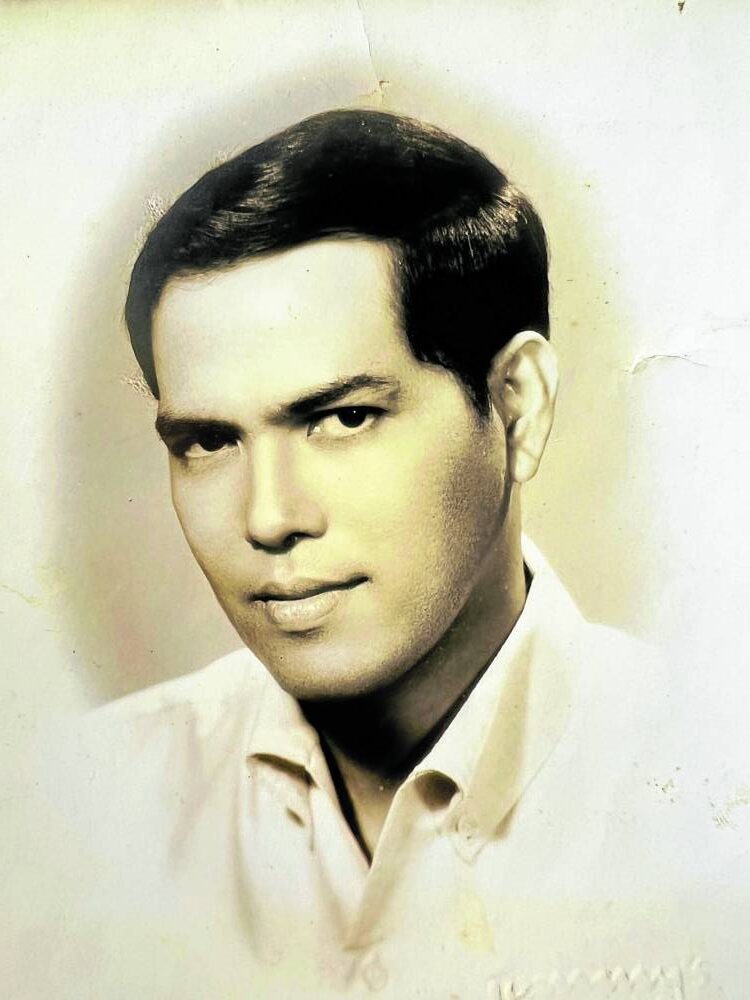
Under the Corazon Aquino administration, Espiritu opened another shop which had Luis Beltran, then editor in chief of Philippine Daily Inquirer, as his client. Beltran invited him to write a column, “Friends and Trends,” in the Lifestyle section. Espiritu started column writing in the ‘70s in Times Journal.
In the late ‘80s and ‘90s, Espiritu folded up his custom shop and ventured into RTW with his XTN label. Sold at SM, his clothes
espoused the Espiritu aesthetic: simplicity with one outstanding detail. However, the casualization of fashion impacted his business. Espiritu sold his factory in Cubao and his house in Forbes Park.
He went to try his luck in New York in 1994 while his daughter Talitha took postgraduate and doctorate studies in cinema at New York University.
Dreaming of seeing his clothes on display at major department stores, he set up a modest shop in Herald Square, overlooking Macy’s Department Store. He had a lean staff of four Filipina sewers from New Jersey. After work hours, he, his nephew and his wife finished the orders, since they couldn’t pay overtime to the staff.
Espiritu was unsuccessful in dealing with agents to get him into the stores. He ended up making clothes for the Fil-Am community whom he called “society potpot (claypots),” a description for arrivistes. This clientele was a contrast to his society swans.
Feeling that his fashion days were over, Espiritu came home to reboot his life, albeit a quieter one. He briefly revived his column, writing for other newspapers, and edited the Ayala Alabang Village newsletter until he moved to Cavite.
In 2019, a big blow came when his eldest son, Paul, died of throat cancer, followed by his devoted wife Gli. Throughout the pandemic, Espiritu posted photographs of how he fixed up his house and garden.
Yet, he remained reclusive.
Last Father’s Day, Espiritu was at the hospital for a check-up. The 89-year-old patient was in a jovial mood when he suddenly froze and stared into space. Nurses tried to revive him in front his youngest son, Justin.
He is survived by his children Jolina, Talitha and Justin, their spouses and 10 grandchildren.
Parrish Espiritu Carlos continues to serve his uncle’s former clients and their children at his atelier in BF Parañaque. He will never forget his uncle’s advice: Keep the operations simple and never get tired—like he did.
###—###
#Byline2
@Inq_Lifestyle
By Marge C. Enriquez
@Inq_Lifestyle

